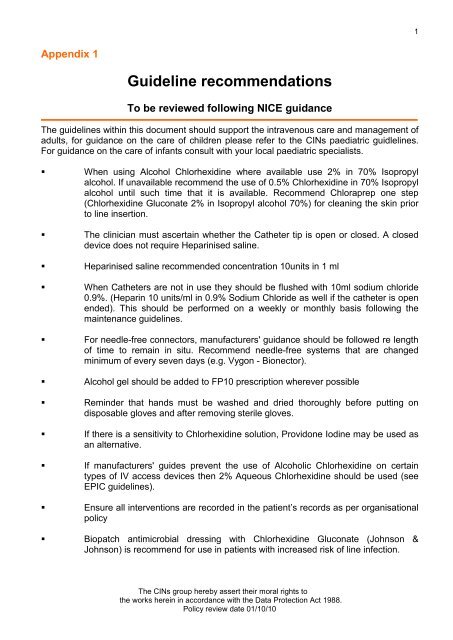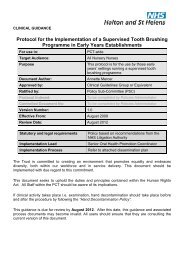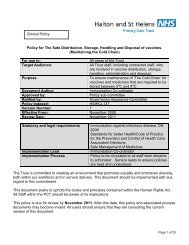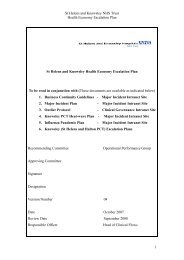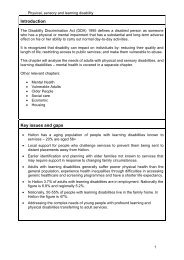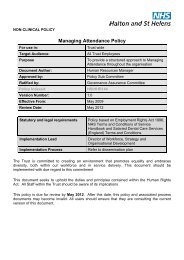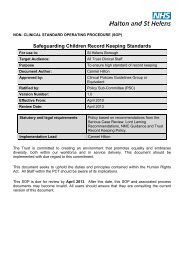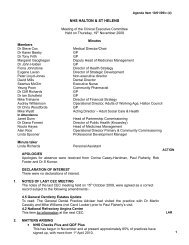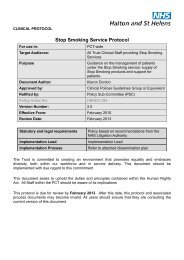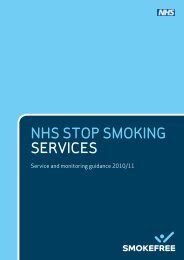Collaborative Intravenous Nursing Service (CINS) Guidelines
Collaborative Intravenous Nursing Service (CINS) Guidelines
Collaborative Intravenous Nursing Service (CINS) Guidelines
- No tags were found...
You also want an ePaper? Increase the reach of your titles
YUMPU automatically turns print PDFs into web optimized ePapers that Google loves.
1Appendix 1Guideline recommendationsTo be reviewed following NICE guidanceThe guidelines within this document should support the intravenous care and management ofadults, for guidance on the care of children please refer to the CINs paediatric guidlelines.For guidance on the care of infants consult with your local paediatric specialists.When using Alcohol Chlorhexidine where available use 2% in 70% Isopropylalcohol. If unavailable recommend the use of 0.5% Chlorhexidine in 70% Isopropylalcohol until such time that it is available. Recommend Chloraprep one step(Chlorhexidine Gluconate 2% in Isopropyl alcohol 70%) for cleaning the skin priorto line insertion.The clinician must ascertain whether the Catheter tip is open or closed. A closeddevice does not require Heparinised saline.Heparinised saline recommended concentration 10units in 1 mlWhen Catheters are not in use they should be flushed with 10ml sodium chloride0.9%. (Heparin 10 units/ml in 0.9% Sodium Chloride as well if the catheter is openended). This should be performed on a weekly or monthly basis following themaintenance guidelines.For needle-free connectors, manufacturers' guidance should be followed re lengthof time to remain in situ. Recommend needle-free systems that are changedminimum of every seven days (e.g. Vygon - Bionector).Alcohol gel should be added to FP10 prescription wherever possibleReminder that hands must be washed and dried thoroughly before putting ondisposable gloves and after removing sterile gloves.If there is a sensitivity to Chlorhexidine solution, Providone Iodine may be used asan alternative.If manufacturers' guides prevent the use of Alcoholic Chlorhexidine on certaintypes of IV access devices then 2% Aqueous Chlorhexidine should be used (seeEPIC guidelines).Ensure all interventions are recorded in the patient’s records as per organisationalpolicyBiopatch antimicrobial dressing with Chlorhexidine Gluconate (Johnson &Johnson) is recommend for use in patients with increased risk of line infection.The CINs group hereby assert their moral rights tothe works herein in accordance with the Data Protection Act 1988.Policy review date 01/10/10


